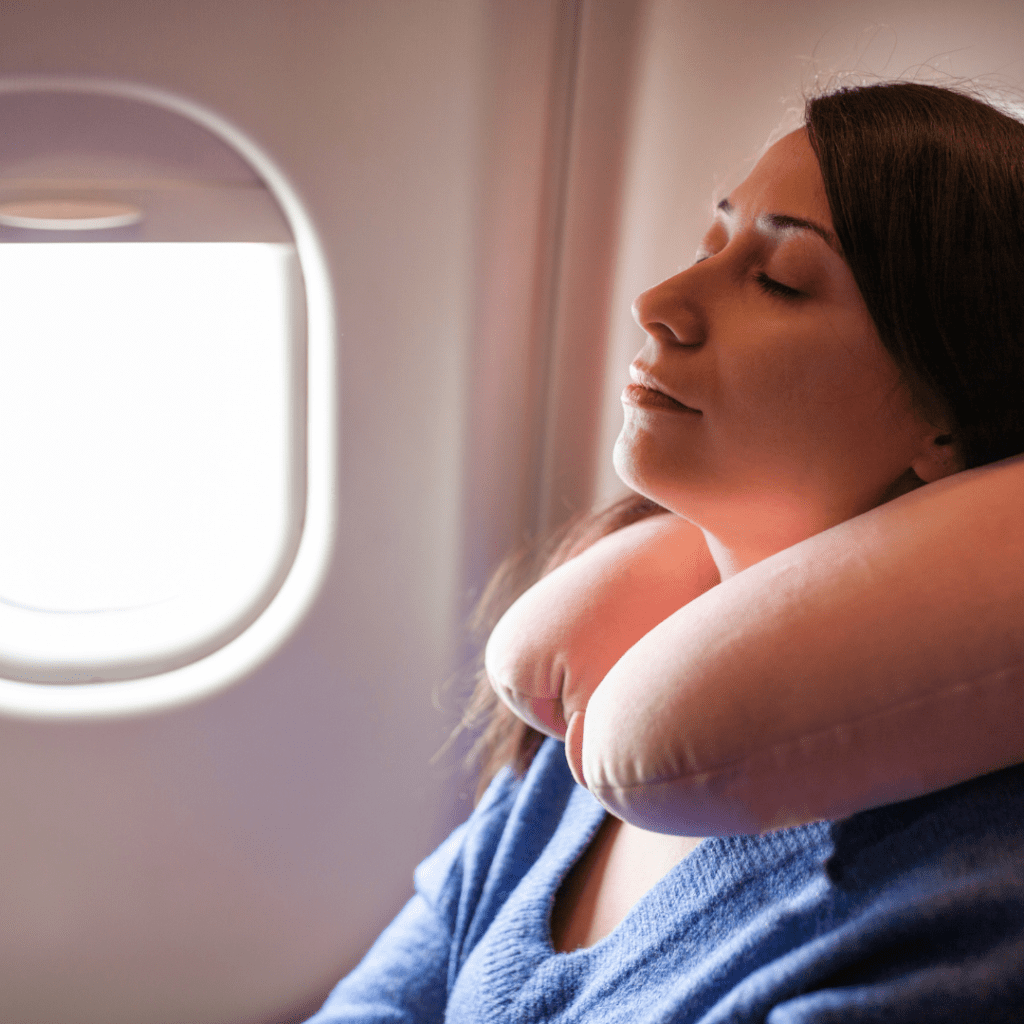Whether you’re a frequent flyer or an occasional traveler, you might have experienced the discomfort of swollen feet and ankles after a long journey. This phenomenon, commonly referred to as “traveler’s edema,” can be puzzling and uncomfortable. Let’s talk about the reasons behind why your feet and ankles tend to swell when you’re on the go and explore strategies to mitigate this common travel woe.

The Culprits:
Prolonged Sitting and Gravity
One of the primary culprits behind swollen feet and ankles during travel is prolonged sitting, particularly during long flights, train rides, or road trips. When you sit for extended periods, your leg muscles remain inactive, reducing their ability to pump blood back up to the heart efficiently. Additionally, the effects of gravity come into play. As blood pools in the lower extremities, it can lead to fluid retention and swelling.
The Impact of Cabin Pressure
Air travel presents its own set of challenges for our bodies, one of which is the cabin pressure. The air pressure inside an airplane cabin is typically lower than at ground level. This reduced pressure can cause body tissues to expand slightly, potentially leading to increased fluid retention and swelling. Moreover, the dry air inside the cabin can contribute to dehydration, another factor that exacerbates the risk of swelling.
Restricted Movement and Tight Spaces
Travel often means confined spaces, whether it’s an airplane seat, a car’s passenger compartment, or a train compartment. Limited legroom can make it difficult to stretch and move your legs, impeding blood circulation. When your legs are in a stationary position for an extended period, it hampers the natural flow of blood and lymphatic fluid, making swelling more likely.
The Role of Diet and Hydration
What you consume before and during your journey can also influence swelling. Consuming salty foods or drinks with high sodium content can contribute to water retention, intensifying the swelling. Sodium causes your body to hold onto excess water, which can accumulate in your feet and ankles. On the other hand, inadequate hydration can lead to dehydration, making it more challenging for your body to regulate fluids properly and increasing the risk of swelling.
Preventive Measures: How to Reduce Swelling While Traveling
- Stay Hydrated: Drink plenty of water before, during, and after your journey. Avoid excessive consumption of caffeine and alcohol, as they can contribute to dehydration.
- Move Regularly: Whenever possible, take breaks to stretch and move your legs. Simple ankle circles, foot pumps, and leg lifts can help improve blood circulation and prevent swelling.
- Compression Garments: Consider wearing compression socks or stockings designed to improve blood flow. These garments provide graduated pressure, helping to push blood upwards and reduce the risk of swelling.
- Elevate Your Feet: During breaks, elevate your feet to a comfortable height. This can help counteract the effects of gravity and encourage fluid drainage from your lower extremities.
- Choose Healthy Snacks: Opt for snacks low in sodium and avoid overly salty options. Fresh fruits, vegetables, and nuts are great choices to keep you satiated without contributing to water retention.
- Exercise Before Travel: Engaging in physical activity before your journey can stimulate circulation and reduce the risk of fluid accumulation. A brisk walk or light workout can work wonders.
Swollen feet and ankles during travel might be a common annoyance, but understanding the underlying causes can help you take proactive steps to prevent it. By staying mindful of your diet, hydration, and movement, you can significantly reduce the likelihood of experiencing uncomfortable swelling during your journeys. Incorporating these strategies into your travel routine will not only contribute to your overall comfort but also support your long-term well-being. So, the next time you embark on an adventure, keep these tips in mind to ensure that your feet and ankles remain happy and healthy throughout the journey.
